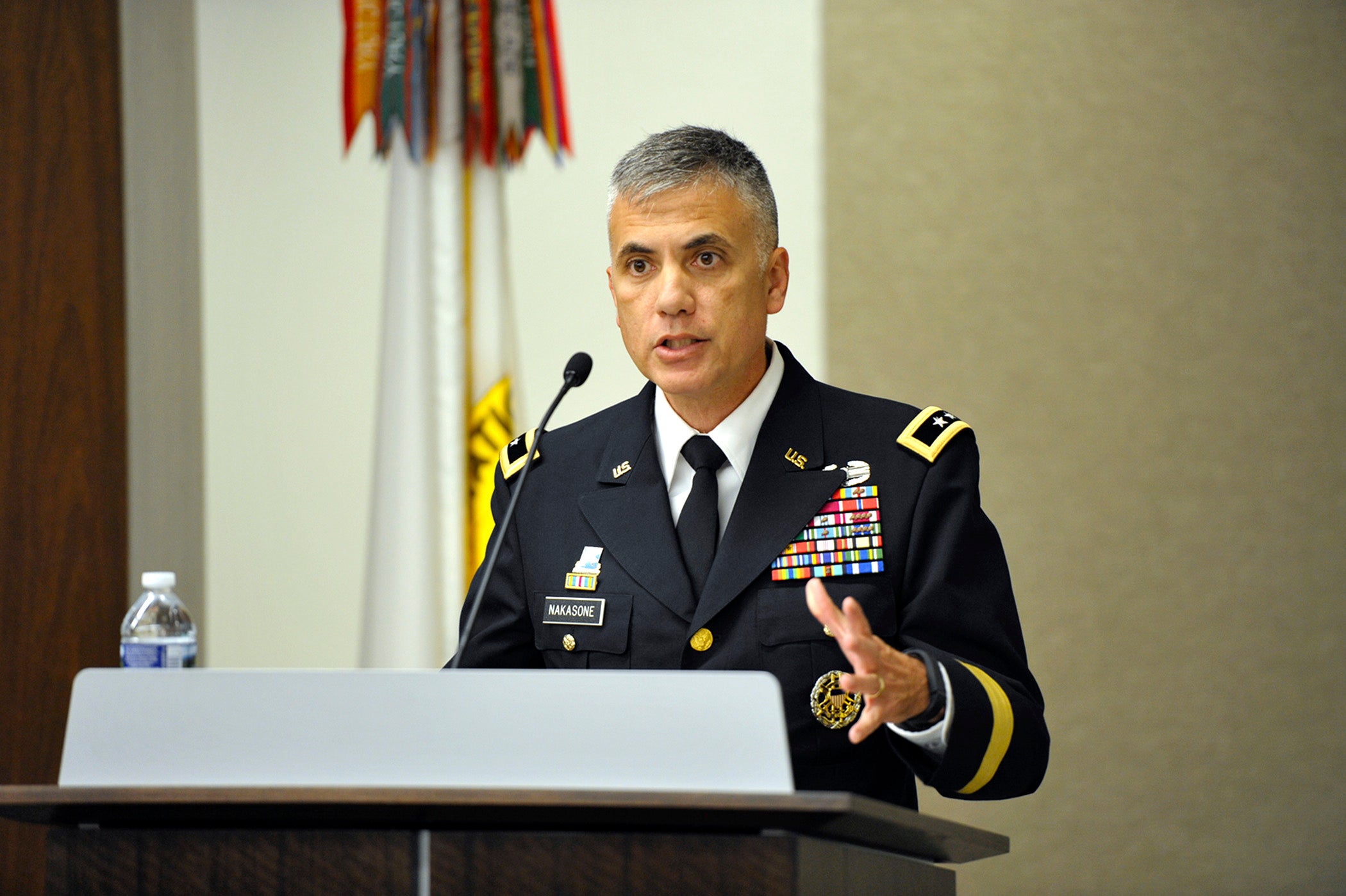Cyber threats, technology will impact Army network development
Cyber threats, technology will impact Army network development
Breathtakingly swift advances in cyber threats, capabilities and technology will heavily impact the Army’s efforts to develop its network for both offensive and defensive operations, said Maj. Gen. Paul Nakasone, commander of the U.S. Cyber Command’s Cyber National Mission Force.
Against that backdrop, he said, the release of the Army Network Campaign Plan in February 2015 to guide those efforts “seems well-placed.”
Nakasone gave the keynote address at the Hot Topic forum “Network Readiness in a Complex World,” sponsored by the Association of the U.S. Army’s Institute of Land Warfare.
He said the Army Network Campaign Plan, designed to provide vision and direction for the evolution of the Army network in 2020 and beyond, will feel the impact of cyber three ways.
“First – no surprise – the threats our networks face are capable, persistent and dynamic,” he said. “This will require us to rethink how we defend ourselves.”
Second, he said, will be a sharp rise in the demand for technology. “We not only must leverage technology to drive costs to our adversaries higher while lowering costs to ourselves and our networks, but we also must be able to maneuver within cyber space to defeat our adversaries,” Nakasone said.
Finally, he said, “The foundational necessity to recruit, train and retain a high-end workforce to address both our networks and cyberspace operations will push us to find unique ways to manage our most talented personnel.”
The Army “has a unique opportunity to address these areas,” Nakasone said, “both in building on what we already have in place, and in the challenges we must address to ensure commanders can leverage Army networks to successfully apply strategic land power in the complex environments of today and tomorrow.”
The Cyber National Mission Force, a joint force made up of nearly 40 teams and 2000 personnel across four different CONUS locations, is responsible for preventing destructive attacks against the United States. The Army mans, trains and equips 11 of these teams, he said.
The Army Network Campaign Plan featues an outline of the Army Network of tomorrow, Nakasone said, noting that “the Army is moving to cloud-based computing” to improve connectivity to camps, posts and stations.
The network plan also talks about an operating environment defined by strategic, fiscal and technological changes that will effect the future network, he said. The Army will move its information technology capabilities to a joint enterprise, while balancing the need for technological advantage over enemies with continually shrinking resources.
The bottom line is that “Department of Defense networks will become more secure over the next 12 to 18 months,” he said.
The Hot Topic forum was held at the AUSA Conference and Event Center in Arlington, Virginia.


